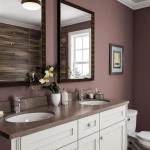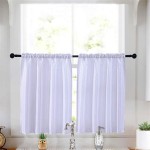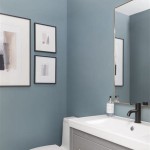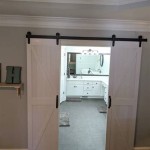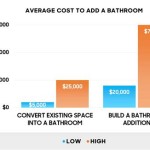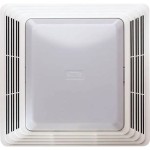Can You Put Laminate In The Bathroom? Weighing the Pros and Cons
Laminate flooring has become a popular choice for many homeowners seeking an affordable and aesthetically pleasing alternative to hardwood or tile. Its durability, ease of installation, and wide range of styles make it an attractive option for various rooms in the house. However, the bathroom presents a unique set of challenges due to its high humidity levels and potential for water exposure. Therefore, the question of whether laminate flooring is suitable for bathrooms requires careful consideration.
This article will explore the potential benefits and drawbacks of using laminate flooring in bathrooms, examining the factors that contribute to its performance in this environment and providing insights to help homeowners make informed decisions. Understanding the specific characteristics of laminate, the installation requirements for wet areas, and the necessary maintenance practices is crucial for determining the suitability of this flooring material for bathroom applications.
Understanding Laminate Flooring
Laminate flooring is a multi-layer synthetic flooring product fused together through a lamination process. It typically consists of four layers: a wear layer, a decorative layer, a core layer, and a backing layer. The wear layer is a transparent, protective coating that resists scratches, stains, and fading. The decorative layer is a high-resolution photograph of wood, stone, or other materials, giving the laminate its aesthetic appeal. The core layer, usually made of high-density fiberboard (HDF) or medium-density fiberboard (MDF), provides the main structural support and impact resistance. The backing layer is a moisture-resistant layer that prevents the core from absorbing moisture from the subfloor.
The durability and water resistance of laminate flooring depend heavily on the quality of the materials used and the manufacturing process. Higher-quality laminates typically have thicker wear layers and more robust core layers, providing better protection against wear and tear and moisture intrusion. However, even the best laminate flooring is not entirely waterproof and can be damaged by prolonged exposure to water.
The seams between laminate planks are potential weak points where water can seep through and damage the core layer. When the core layer absorbs moisture, it can swell, warp, and delaminate, compromising the integrity of the floor. Therefore, proper installation and sealing of the seams are essential for preventing water damage in bathrooms.
Potential Benefits of Laminate Flooring in Bathrooms
Despite the inherent risks associated with using laminate in a wet environment, there are several reasons why some homeowners choose this material for their bathrooms. The primary advantage is its affordability. Laminate flooring is generally less expensive than hardwood, tile, or stone, making it a budget-friendly option for bathroom renovations. This cost-effectiveness can be particularly appealing for larger bathrooms or multiple bathrooms in a home.
Another benefit of laminate flooring is its ease of installation. Many laminate products feature a click-lock system that allows planks to be easily connected without the need for adhesives or specialized tools. This simplifies the installation process, making it a viable DIY project for homeowners with some experience. However, for bathrooms, it's critically important to ensure a properly sealed and waterproof installation, which may require professional assistance.
Laminate flooring is also relatively easy to maintain. Regular sweeping or vacuuming can remove dirt and debris, and occasional damp mopping can keep the floor clean. Unlike hardwood, laminate does not require refinishing or sealing. Furthermore, it is more resistant to stains and scratches than many other flooring materials, making it a practical choice for high-traffic areas.
Aesthetically, laminate flooring offers a wide range of styles and finishes. It can mimic the look of hardwood, tile, or stone, providing homeowners with numerous design options to match their bathroom décor. This versatility allows for creating a cohesive and visually appealing bathroom space without the high cost of natural materials.
Risks and Considerations for Bathroom Applications
The most significant risk associated with using laminate flooring in bathrooms is its vulnerability to water damage. The core layer of laminate is particularly susceptible to moisture absorption, which can lead to swelling, warping, and delamination. Even small amounts of water that seep through the seams between planks can cause significant damage over time.
Bathrooms are inherently high-humidity environments, with frequent exposure to steam from showers and baths. This constant humidity can contribute to moisture buildup in the subfloor and around the edges of the laminate flooring. Poor ventilation can exacerbate this problem, increasing the risk of water damage.
Leaks from toilets, sinks, or showers can also pose a serious threat to laminate flooring. Even a small leak that goes unnoticed for an extended period can cause significant damage. It is crucial to address any leaks promptly and ensure that the bathroom is properly sealed to prevent water infiltration.
The type of laminate flooring chosen for a bathroom is also a critical factor. While some laminate products are specifically designed for wet areas, they are not entirely waterproof. These products typically have a denser core layer and a tighter locking system to minimize water penetration. However, even these water-resistant laminates require careful installation and maintenance to prevent water damage.
Installation and Maintenance Best Practices
Proper installation is paramount for ensuring the longevity and performance of laminate flooring in a bathroom. The subfloor must be clean, level, and dry before installing the laminate. Any existing moisture problems must be addressed before proceeding with the installation.
A moisture barrier should be installed between the subfloor and the laminate flooring to prevent moisture from seeping up from below. This barrier can be a polyethylene film or a specialized underlayment with a built-in moisture barrier.
The seams between the laminate planks should be carefully sealed with a waterproof sealant to prevent water from penetrating the core layer. This is particularly important around the edges of the room, where water is more likely to accumulate. Using a high-quality sealant specifically designed for laminate flooring is recommended.
Proper ventilation is essential for reducing humidity levels in the bathroom. An exhaust fan should be used during and after showering or bathing to remove excess moisture from the air. Regular cleaning and maintenance can also help prolong the life of laminate flooring in the bathroom. Spills should be cleaned up immediately, and the floor should be regularly swept or vacuumed to remove dirt and debris.
Avoid using excessive amounts of water when cleaning laminate flooring. A damp mop is sufficient for removing dirt and stains. Harsh cleaning chemicals should be avoided, as they can damage the wear layer of the laminate.
Regularly inspect the laminate flooring for signs of water damage, such as swelling, warping, or discoloration. Address any leaks or moisture problems promptly to prevent further damage.
Alternatives to Laminate Flooring
Given the risks associated with using laminate flooring in bathrooms, homeowners may want to consider alternative flooring materials that are more resistant to water damage. Tile is a popular choice for bathrooms due to its waterproof nature, durability, and wide range of styles and colors. Ceramic tile, porcelain tile, and natural stone tile are all excellent options for bathroom flooring.
Vinyl flooring is another water-resistant option that is well-suited for bathrooms. Sheet vinyl, luxury vinyl tile (LVT), and luxury vinyl plank (LVP) are all available in a variety of styles and textures. Vinyl flooring is relatively inexpensive, easy to install, and easy to maintain.
Engineered hardwood flooring is a more expensive option, but it offers the look and feel of real hardwood while being more resistant to moisture than solid hardwood. Engineered hardwood consists of a thin layer of hardwood veneer bonded to a plywood or fiberboard core. However, even engineered hardwood is not completely waterproof and should still be protected from excessive moisture.
Ultimately, the decision of whether to use laminate flooring in a bathroom depends on the homeowner's budget, aesthetic preferences, and willingness to take the necessary precautions to prevent water damage. While laminate flooring can be a cost-effective and attractive option for bathrooms, it is essential to understand the risks involved and to follow proper installation and maintenance practices to ensure its longevity and performance.

Can I Install Laminate Flooring Under A Bathroom Toilet And Sink

How To Install Vinyl Plank Flooring In A Bathroom Fixthisbuildthat

What Is The Best Flooring For Bathrooms Tarkett

How To Install Vinyl Plank Floors In A Bathroom Over Tile

How To Install Laminate Flooring In Bathrooms

Dos And Don Ts For Installing Vinyl Plank Floors In The Bathroom Advice Homeowners

How To Install Vinyl Plank Flooring In A Bathroom As Beginner Home Renovation

Best Bathroom Flooring Options

How To Install Vinyl Plank Tiles In A Bathroom

Bathroom Flooring Ideas The Home
See Also


